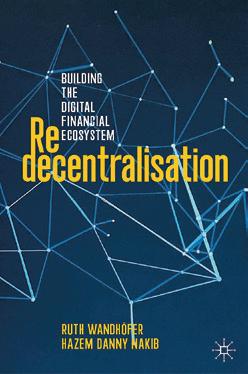T+1 securities settlement: Is the ecosystem ready?







the way for global transition to expedited trade

Welcome to the latest edition of The Fintech Times, where we set our sights on two central themes that are shaping the present and future of the fintech landscape.
As the world grapples with challenges ranging from rising cybercrime to economic instability, fintech organisations are stepping into the spotlight, showcasing their remarkable resilience and driving the financial industry toward a more secure and sustainable future.
Amid the shifting tides of uncertainty, one aspect remains clear: fintechs are at the forefront of fortifying the financial sector against adversities.
In the wake of the pandemic, remote work became an unexpected reality for many employees, offering the comfort of home for their daily tasks. While concerns were raised about security and feasibility, the fintech sector demonstrated remarkable adaptability. But with office spaces reopening, the question arises: is remote work still a viable choice? Turn to page six for industry perspective.
On page 20, 10x Banking offers a solution to a pressing challenge. With revelations that slow digital transformation has caused
missed opportunities and customer losses, their advocacy for core system overhaul and cloud-based solutions presents a clear pathway to rapid transformation. This insight isn’t solely about customer retention; it’s also a strategic move to attract and retain skilled talent.
On page 16, SmartStream highlights the global shift to faster trade compliance driven by the SEC’s amendments. This impacts the US, Europe, and Asia Pacific.
horizon of innovation, we address the world of second-generation fintechs. These emerging powerhouses are more than just successors to their pioneering predecessors; they are catalysts propelling the industry into uncharted territories.
While the first generation pioneered the art of disruption and revolutionised customer experiences, the second generation takes the baton and charges forward, armed with cutting-edge technologies and a profound understanding of intricate financial intricacies.
On page four, we take a dive into the realm of second-generation fintech to learn how these companies plan to compete with their elders.
SmartStream urges firms to modernise to boost efficiency amidst the T+1 settlement change. Its solutions cover reconciliations, cash management, collateral, and corporate actions, preparing businesses for seamless adaptation to faster settlement processes ahead.
As we also turn our focus towards the
Then in this issue’s Culture section, we hear how – as a secondgeneration fintech – Brite Payments learns from its predecessors, emphasising value-driven products over rapid growth.
Finally, you may well be reading this newspaper at Seamless in Saudi Arabia or at Sibos in Canada – be sure to check our insight into the evolving fintech landscapes in these regions on pages 12 and 18.
Claire Woffenden, Editor, The Fintech Times
“AMID THE SHIFTING TIDES OF UNCERTAINTY, ONE ASPECT REMAINS CLEAR: FINTECHS ARE AT THE FOREFRONT OF FORTIFYING THE FINANCIAL SECTOR AGAINST ADVERSITIES”
Innovative ideas and complete technological transformation have characterised the fintech boom we’ve witnessed over the past decade, and the results of that have revolutionised how we live our lives.
However, over the past few years, a new breed of fintech has emerged on the scene, a younger, hardier bunch that are ready to take over and prove themselves against their established counterparts.
These are the second-generation fintechs. Fuelled by economic turbulence, social change, and rapid digitalisation, these companies are the next wave of innovation and development in the financial technology sector. They represent the evolution and maturation of the initial wave of fintech
companies that emerged in the early 2000s and plan to shape the future of the industry. While the first generation focused primarily on disrupting traditional financial services and improving customer experiences, the second generation goes a step further by leveraging emerging technologies and addressing more complex financial challenges at a new level of innovation that hasn’t been seen before.
Companies in the first wave of fintech were focused on timesaving and convenience at a consumer level. Whether that's in electronic banking, trading, or any other financial product – it was all about making things as easy as possible for their customers.
“That generation of services expanded to the use of financial products by a wider audience, across all age groups and demographics," says Henry Zelikovsky, CEO of software engineering company Softlab360.


He continued: “The second generation of fintech companies took the experience of rapid change and the willingness of the audience to sample a variety and quality of new services to advance the use of finance and investment at the level of the
individual. Automation in technology, capturing and harnessing the data that identifies effectiveness and yet lack of the ideal benefit, the completeness to the well-aware consumer has become a key focus. Companies sharpen their focus to produce better coverage through advancement in machine learning, leading to the present-time use of generative AI.”
George Chesakov, co-founder and CEO at Salmon, a Filipino consumer fintech, expanded on this: “Many first-generation fintechs based their business models on assumptions that were proven to be wrong. They focused on disrupting one particular service, such as cross-border remittances or foreign exchange, but found it hard to diversify after they had exhausted their niche. By providing cheaper services to customers, they were able to compete with banks in one specific niche for a time, but in the end, failed to create profitable income streams for themselves.
“In addition, most first-generation fintech companies were trying to disrupt the system by working outside of it, shunning engaging with regulators. Next-generation fintechs like Salmon are data-centric, customer service-oriented organisations that are disrupting the industry organically from within, in close collaboration with regulators that now
have a better understanding of fintech and the benefits they offer.”
There’s a very distinct calibre of first gen fintechs, and they had a very specific job to do which arguably has made life better for everyone now that finance exists almost exclusively on the internet.
Echoing this, Jared Gardner, VP of growth at 401k provider Human Interest, said: “One might outline the first wave of fintech companies, many of which are now publicly traded companies, as companies that successfully took an existing category and put it online. Then in the 2010s, fintechs created a plethora of micro apps for consumers that specialised in a certain vertical and did it incredibly well at a low price.”
So, the distinction between the two generations is clear, but why does this matter? Well, as with anything in life, it's important to learn from the people who came before you, or in this case, the fintechs that were created first.
Eyal Moldovan, digital trade finance platform 40Seas’ co-founder and CEO said: “Every success and failure in fintech, and other industries, is something to learn from. One major influence on our strategy is the focus on scalability and profitability. While many fintechs were able to build something popular and ‘sticky’ they were unable to do so in a
Fintech has grown up, and it's about to get interesting. Features
Editor Polly Jean Harrison takes a dive into the realm of second-generation fintech to learn how these companies plan to compete with their elders.
scalable and profitable manner. As companies grow, the competitive field intensifies, eventually driving down margins and pushing the industry towards commoditisation. If you start off with a broken model, you’ll never be able to compete at scale.”
There are dozens of lessons both from fintech startups and startups in other verticals for newer players to learn, but Gilad Uziely, CEO at financial router Sequence, thinks one of the most important is that “passive tools are not enough anymore". People are expecting magic. They want, not only, to be able to actually move money but they want it to be done for them to a certain extent.
He continued: “The second thing we’ve learned is that in consumer fintech there’s no one-size-fits-all. We all have very different financial situations, needs and goals. Consumers are expecting to be able to tailor solutions to their own needs as they evolve.”
After all – “the customer’s voice needs to be the loudest in the room,” said Kenny Rose, CEO of investment platform FranShares. “You can’t be a master of all. You have to pick a niche and dive deep. You need to do more than enable transactions. You need to educate customers to maximise opportunities for success.”
When it comes to second-generation fintechs, they can certainly learn from their predecessors, but it's important that they carve their own path and create a genuinely viable business that can survive the ever changing waters that is the industry at hand. As Gardner said: “It is critical to remember that building a terrific product does not mean building a terrific business. We’ve seen many successful fintech companies get acquired because they have
not been able to monetise their business and need the support of a larger organisation. We've also seen much-hyped acquisitions of fintech companies fall through once they reach the due diligence phase. In either scenario, it is important to build a sustainable business that will thrive on its own – that is a success.”
But, it's not all hopeless, as leaders in the new generation can learn from the fintechs
that have come before them, taking their failings and improving the system.
“Lessons learned in the time of the first generation of our technology led us to augment our offering by extending a helping hand to our customers,” commented Zelikovsky.
Can there be room in the industry for everyone? Well, yes, as is clear from the current activity we’re seeing daily. Realistically, fintech always works best when operating within a niche. The quirky, specialised products and services always tend to be the most innovative. But by working within that niche, it leaves plenty of room in the industry for everyone.
After all, though it's often the lofty ambition of any fintech company, it could be more of a pipedream that these second-generation fintechs can compete with the big guns. BUT – why should they have to?

Patrick White, co-founder and CEO at Bitwave, a digital asset platform, holds the view that disruption is futile, and actually existing with the bigger players is just as valid as making new waves.
He said: “One interesting story of the first generation of fintech companies (depending on how you define it), is for all the money that was invested to disrupt legacy players like QuickBooks and NetSuite, those platforms are still the
undisputed leaders. That even goes for banks - wires still move more money than peer-to-peer payment systems. I think that fintech has gone through the same process of learning to embrace eco-systems that other internet companies have, and knowing where to augment and where to compete is an important part of the story.”
Uziely holds a similar view and believes while his company, Sequence, has built upon the innovations of previous companies and taken them to the next level, they wouldn't be where they are without them. “Without everything those companies built, the opportunity and challenges we are solving for were non-existent. Moreover, companies like Plaid have allowed us to technically do what we are doing and are at the core of our product.”
However you swing it, there is much still to come from the fintech industry. These second generation fintechs are paving the way for new innovation and a new revolution in financial services. By taking everything they can from their predecessors, whether that's simply examining their operations and taking notes or actually working with them in order to implement their product or service, second-gen fintechs shouldn’t be counted out just yet. After all, this town, or industry, is big enough for the two of them.
AS
ANYTHING IN LIFE, IT'S IMPORTANT TO LEARN FROM THE PEOPLE WHO CAME BEFORE YOU, OR IN THIS CASE, THE FINTECHS THAT WERE CREATED FIRST

While some firms expressed reservations about the work-from-home (WFH) model, especially due to potential security issues, many companies in the fintech industry successfully adapted.
Now that office spaces are open again, is working from home still a viable option?
Francis Bignell, journalist and lead LatAm correspondent at The Fintech Times, delves into this topic, gathering insights from industry leaders to shed light on the matter.

“Flexible working has always been an essential part of our fintech’s culture. Global teams can’t always operate from physical offices –especially for executives and founders who are fundraising. Pre-Covid, we supported partial WFH as a way to encourage borderless collaboration. During Covid, our teams across Europe, the UK and Africa maintained their home office setups and we were able to continue working without issue. We still WFH in a hybrid model, and we adapt it regularly based on preferences for office support and in-team meetings. Long-term WFH structures are doable, if there’s clear communication of company goals and careful track of how we are achieving them in a positive management approach. We love tools like Lattice for helping us track this, as well as keeping regular meeting agendas. Overall, we reward performance. We also have a new focus on larger team gatherings where people from different offices can meet in person. While more work to coordinate, it levelled up our productivity and product advancement. I think many fintech companies will follow this direction – flexible options coupled with in-person meet-ups to supercharge certain projects.”
“Prior to the pandemic we adopted a work from home/work from anywhere model, and it is still thriving for our globally distributed team at Insured Nomads, a fintech/insurtech providing medical/ wellbeing/safety for the modern company, remote workers and travellers. It has been a journey of discovery, trial and error, and learning to apply the technology and processes that are vital for a successful WFH/WFA application. Being a young company (four years old) with employees from many cultures, languages and time zones, there has been a learning curve in adapting to fellow teammates operating style, expectations and norms from local culture that must be meshed with those of other cultures of teammates around the globe, and the lack of in-person social settings for camaraderie and understanding of management styles. Work from home is here to stay at Insured Nomads, but we prefer to grant the freedom to work from the location of choice.”
“The short answer is: yes. Volante has offices all over the map, so we were already set up for a multi-region / multi-time zone scenario, and most of our teams faced the challenge head-on. In addition, hiring continued during Covid, so this new reality opened our eyes to the fact that finding the right talent doesn’t have to be limited by geography anymore. Technology allows us to have a virtual, fully staffed team that meets our needs. As the status of the pandemic has changed, some of our office locations have encouraged teams to go back to the office a couple of days a week, especially those working on projects that can benefit from the live exchange of ideas and the camaraderie that comes from face-to-face interactions. However, our virtual office environment is now a reality that works for us. Teams rallied during Covid; results were still delivered, projects were still completed, and teams did terrific work under incredibly troubling and challenging times. Fintechs that have embraced WFH and hybrid work are listening to how their employees’ circumstances changed because of the pandemic. They are deciding to trust the team they have put together to make the company succeed from their home office, in-location office, or both!”

The pandemic introduced many employees to a working condition they never expected: the comfort of their own sofa

“I have been working from home – or wherever I have been at the time, which has included a Thai island, Machu Picchu, and many other places, and on one occasion (unbeknown to the other participants) on a conference call from the summit of Colorado’s highest mountain – for 40 years, since 1982. I was not alone. Those of us who worked remotely from our Colorado eyries at that time were dubbed ‘Lone Eagles’. I once even appeared in an article in a Denver newspaper on the subject. Initially, I had to FedEx computer programs on diskette to my New York partner from my mountain home, where FedEx had just started operating. Working from home is much easier now of course. Instead of copying from my hard drive to diskette and sending it, I can now send it in an instant through the internet by any one of a number of means. If working from home was possible 40 years ago, it is surely possible now. But it seems to require a certain type of personality, happy with solitude.”

“We’ve been a remote company from day one. It’s difficult finding experts for a nascent industry in a small city like Pittsburgh so our team is flung far and wide. Currently our team lives and works from Cincinnati, Butler (in Pennsylvania), Philadelphia, Chicago and Melbourne, Australia. The developers who list on our platform are also located nationally – videoconferencing has always been an important tool. Even meetings with the SEC and FINRA (the Financial Regulatory Agency) are conducted online. I split my time between home and the office. The internet has made that a fluid possibility. But when I’m not at the office I miss my tiny team. There is nothing quite like face-to-face banter with my colleagues.”
“i2c, Inc. has successfully allowed many US-based employees to work from home long before the pandemic in 2020. Among staff who work from home, the company has since found no dip in productivity, less distractions for staff at home and a heightened willingness to delegate to junior staff members. The company has also made internal adjustments to enable staff to more successfully work from home. At the start of the fiscal year, senior staff from around the world gather face-to-face for the annual general meeting to plan and coordinate the company’s activities and network among their peers. There is also a very heavy use among internal teams to interact through group meetings online when conducting work activities. The company culture makes sure every employee feels connected to the team and the rest of the company. In a traditional fintech company there is often a struggle to find people with the right experience to fill key positions. There are few cities in the world that have the talent pool that would make it easy for a fintech company to meet all its staffing needs. The decision to let employees work from home has dramatically opened up the talent pool that enables us to recruit from throughout the US and the rest of the world for the right staff.”

We chat with Osama Bukhari , CEO of Al Faris International Group, about his involvement in the banking industry across Saudi Arabia and his aspirations to leverage his banking expertise to bolster SMEs in the region

Despite their significant contributions as employers and to economic development, SMEs across the globe continue to be underserved by the banking industry. Traditional banks have failed to address issues pertaining to SME lending; leaving it to fintech firms to keep small businesses afloat.
Al Faris, a professional consulting company and provider of end-to-end, integrated banking software for businesses across the Middle East, Europe, Africa, and the Americas, is hoping to ease SME concerns and make it easier for them to expand their business more quickly.
The Fintech Times recently sat down with Osama to find out more about the evolution of his career, his involvement in Saudi Arabia’s banking industry, and his plans to support SME growth in the region.
THE FINTECH TIMES: How did your career in the banking sector begin?
OSAMA BUKHARI: I started out with a computer science degree. I joined the banking sector in 1996, with the Saudi American Bank (Samba), which was part of Citibank at the time. I started at the bank in operational technology because of my technology background. Then, around six months later, I was approached by a new business, Cash Management, which was dealing with receivable automation, payable
automation and online banking – prior to the internet era which came in around 1999 in Saudi Arabia. There, we actually built a payable solution, a collection solution and fully functional online banking using dial-up internet. You call the number to connect, but
you could actually transact – local transfers and international transfers – everything.
I later moved to Banque Saudi Fransi as the head of e-corp. In 2006, I moved on again to work for the Arab National Bank, which had just started its cash management department. I transformed it into a money-making department and completed what I would call one of my biggest accolades, which is the full automation of Visa processing with the Ministry of Foreign Affairs.
In 2012, I was approached by the ICC (the International Chamber of Commerce) to join the banking committee. A few months later, they voted me as the head of the banking committee and I have held that position ever since. Now, we are having elections again so we’ll see how that goes! I would say, now, I’m considered to be one of the gurus in cash management or transaction banking.
TFT: Tell us about how Al Faris International started
OB: Al Faris actually started off as a school in 2004, by my wife who is also an entrepreneur. I just helped her with the management and finance departments. I started the company at a very small scale and continued working until the company was strong enough to stand on its own two feet, and until I could leave being a paid employee in 2004 to focus on the business. We are now considered to be one of the prominent IT companies in Saudi, especially when it comes to digitalisation.
I deal with all the banks and I know exactly what all of the banks here have. I build products and services to help the banks do their jobs better.
TFT: What would you consider to be Al Faris’ biggest accomplishment?
OB: The biggest thing we’ve built is Indeal.sa which is a B2B marketplace. It’s a public-private partnership (PPP) between the Ministry of Industries and Al Faris Group. We built a national B2B e-marketplace, which is a complete ecosystem where you can deal with your entire supply chain and finance – the whole nine yards. It offers more than rival services where you can’t do bidding or procurement like you can on Indeal. Imagine Alibaba plus LinkedIn, plus Google Search, and SAP Ariba; all combined into one.
wait for the funds to come back in 90 to 120 days, depending on the business terms, so that they can purchase the materials needed to produce again. However, this way they can go to the bank to finance this. They lend the money to the factory upfront, while they wait for 90 days for the big guy to pay. And that’s the gist of reverse factoring. It means the smaller business can operate, instead of three or four times a year, up to 12 times a year. By working this much more and taking the waiting for payment out of the equation, they can grow their factory, and grow the number of employees. This would, in turn, create a ripple effect in a positive way – having a big impact on the economy.
The beauty of this is that it has the full support of the government really wants the business to grow. The whole thing is led by the Ministry of Industries, with the minister himself involved in the project. Also, in the banking sector, there’s the SME bank and Monsha’at, the SME general authority. There are so many government sectors that support SMEs – made possible because everything is digital.
chambers of commerce from the likes of the UK, Malaysia, India or any other country across the world. The banking committee sits across the table because all of us that are in the ICC, are actually business people. We are all businessmen and businesswomen, who can help them with our expertise, and also facilitate businesses.
If they want something in the IT world, I would take the lead in that scenario. If they needed something in contracting, then someone who has a contracting business that would lead that.
TFT: Finally, how do you expect the banking sector to evolve in the future?
The Ministry of Industry’s main target for the platform was to enable all of the Saudi factories and companies to complete transactions amongst themselves. Then we strategically partnered with a couple of banks, because you need the banks to be involved to do the complete supply chain finance. But this platform is honestly aimed at SMEs more than anything else. You see the big guys already have the systems they need, access to banks etc. It’s really the smaller players we are aiming this at because the fact that SMEs are not being properly served is a global phenomenon. Ultimately, we’re aiming to create a platform with the involvement of all the other government and nongovernment agencies that will help accelerate the growth of SMEs.
TFT: How much of an impact could this platform have on SMEs, and how will it achieve this?
OB: We all know that SME businesses have been always underserved, especially when it comes to banking. So, by doing a supply chain finance, banks will be happier to take the risk – because they’re not really taking a risk on the small guy, instead they are taking risk on the payer, which is a bigger player.
I would say that the likes of invoice discounting and reverse factoring would be the killer thing to do because, for example, a small factory working with one client, sells to that client and has to
It is not just a matter of being trendy, but really, because going digital works – especially if you’re dealing with SMEs. Almost a million SMEs exist in Saudi Arabia. If you’re going to onboard this number of clients manually, your life is gonna be a nightmare.
TFT: You’ve been involved in the Banking Committee for a number of years. How is it set up?
OB: The Banking Committee is part of the ICC in Saudi Arabia. The committee has a chairman that is elected every three years. We’re actually in the middle of the new election. I have been part of the executive committees, so a board member and executive committee in the past. However, now that I have less time, I just focus on the banking sector.
The ICC is the body that issues all of the trade rules – so when there is any knowledge needed, they reach out to the banking committee to try to help the banking sector. We do have multiple committees. We try to help with the likes of an arbitration committee and an anti-corruption committee, which can step in and lend support wherever necessary. Basically, we try to complement the entire ecosystem of businesses with a range of different committees, but we are not an authority which implements rules or anything like that, but we are a collection of specialists and experts, from both inside and outside Saudi Arabia, that try to help those who need the information to best adjust the rules and regulations.
TFT: How much involvement does the Committee have with international organisations entering Saudi Arabia?
OB: We have many meetings with the
OB: I don’t think Saudi Arabia is any different than the rest of the world. However, I think we’re just accelerating and moving at a faster pace. For example, we already have three licensed digital banks, two are on the way and I would expect even more to come about – with more purely digital banks that have zero branches. I also expect banking-as-a-service to become the ‘next big thing’, alongside open banking and open APIs. These are definitely the areas I expect to see the most growth in the next couple of years and beyond.

Founded in 2004, Al Faris is a professional consulting company and leading provider of end to end, integrated banking software for business across Middle East, Europe, Africa, and the Americas. The company provides consultancy on the use of solutions for implementation within a specific corporate framework, alongside offering project management for integrating products.
COMPANY: Al Faris International Group

FOUNDED: 2004
CATEGORY: Financial services
KEY PERSONNEL: Osama Bukhari, CEO and founder of Al Faris International Group
HEAD OFFICE: Riyadh, Saudi Arabia
ACTIVE IN: Middle East, Europe, Africa and the Americas
WEBSITE: www.alfarisinfo.com
LINKEDIN: https://www.linkedin.com/ company/al-faris-international-group
“ULTIMATELY, WE’RE AIMING TO CREATE A PLATFORM WITH THE INVOLVEMENT OF ALL THE OTHER GOVERNMENT AND NON-GOVERNMENT AGENCIES THAT WILL HELP ACCELERATE THE GROWTH OF SMES”
For more than two decades, Seamless has consistently been a nexus where industry pioneers, specialists and influencers converge to build relationships, share invaluable insights and introduce trailblazing solutions
Seamless Saudi Arabia 2022 brought together thousands of practitioners from across the payments, fintech, retail and e-commerce communities. More than 21,000 attendees registered to attend from 71 countries with 311 sponsors and exhibitors showcasing over the two days.
Now landing back in Riyadh for 2023, Seamless Saudi Arabia is expected to be even bigger with industry leaders and delegates engaging in rich discourse, deliberations and the evaluation of the latest international products and services.
The event addresses the industry’s pressing challenges and opportunities: from promoting financial inclusivity and pioneering steps in digital banking to unlocking the potential of emerging technologies such as blockchain, robo advisors and insurtech. Emphasis is also laid on wealthtech, regtech, artificial intelligence and crafting strategies for optimal customer experiences and engagement.
The exhibition floor puts the spotlight on the latest innovations and solutions from more than 500 international companies.


Joseph Ridley, general manager of Seamless Saudi Arabia, outlines how Seamless plays a significant role in shaping the future of digital commerce and how it plans to expand globally.

Ultimately the vision for Seamless has always been to create one of the largest global events that brings together banks and financial service providers, government, merchants and retailers of all sizes, to help them with their digital transformation journeys and to better serve SMEs, consumers and citizens. The end goal is to provide a platform and catalyst that drives digital commerce in the new digital economy.
On the banking, fintech and identity side of the event we have witnessed unprecedented change, addressing topics such as creating cashless economies, how new financial technologies and services can drive financial inclusion, literacy and enable financial inclusion for underserved segments such as women, youth and SMEs, how the adoption of new technologies such as AI, digital currencies, digital identity, eKYC and cloud based technologies can create better transparency, operating efficiencies and improve better customer experience, profits and much more.
The audience has evolved too, new job titles and departments focused on new technologies are emerging on a daily basis as the traditional institutions have to understand and embrace the digital
change and new customer expectations. Then of course there are the thousands of new market entrants, fintechs and start-ups who are disrupting the traditional models.

Our sponsors and exhibitors are the global leaders in either payments, fintech, identity, retail, e-commerce, home delivery or digital marketing. We’re fortunate enough to be met with huge demand for space on our exhibition floor so we find we are working with the best of best global companies looking to break into the region or want to carry on asserting their place in this competitive market. The same goes for speakers, we have an entire team dedicated to research into the market trends and who the biggest names are for the industry, and we make sure they come and speak at our event to help drive important conversations forward.

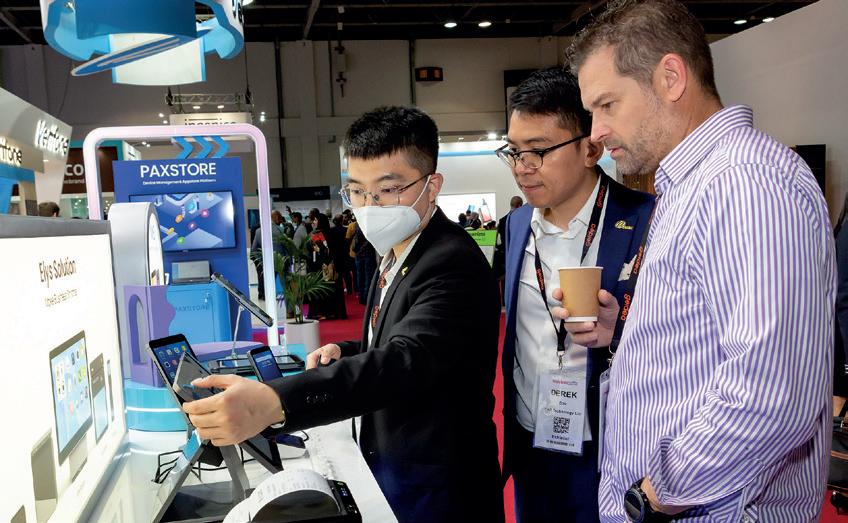

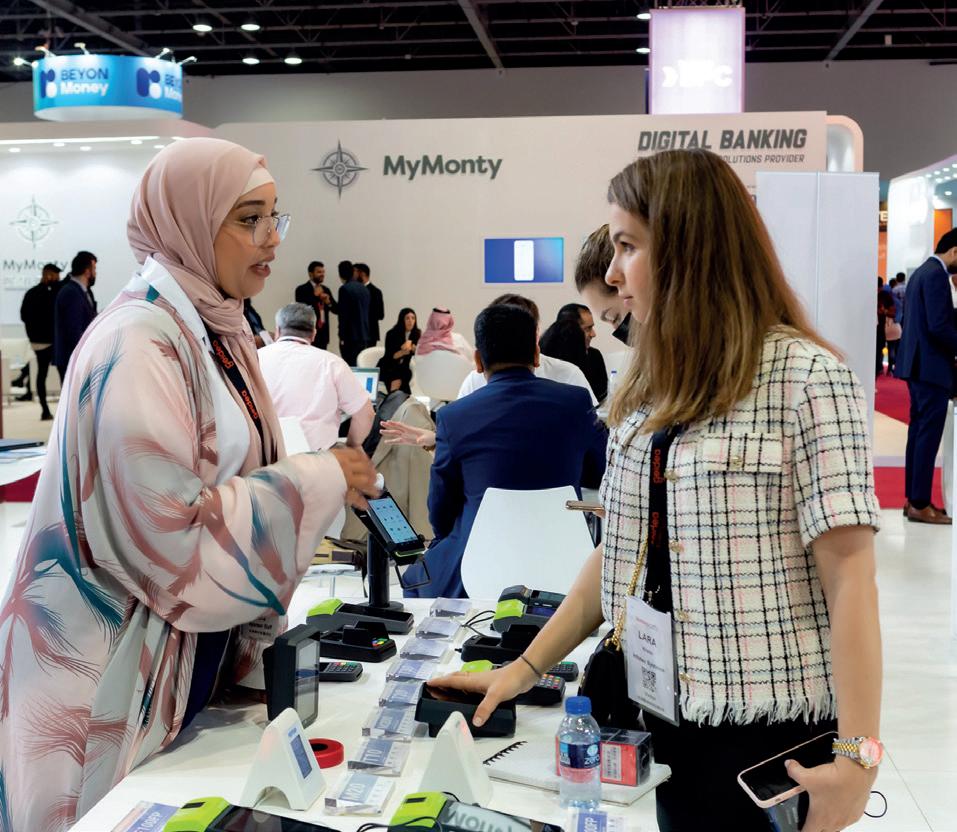
The fintech-focused segment of the Seamless Conference promises a comprehensive overview of the sector’s challenges, opportunities, and emerging trends:
■ Saudi fintech strategy: Nezar Alhaidar of Fintech Saudi presents on Saudi Arabia’s national strategy for the fintech ecosystem, giving insights into its vision and execution.
■ Fintech’s future in the region: A panel, moderated by Lujain Nassif, explores the potential roadmap for the region to become a leading fintech hub. This will feature prominent figures like Fahad Alnassar and Mohammed Alzubi.
■ B2B payments outlook: Francesco Burelli will moderate an interview delving into the future of B2B payments, with insights from Abdulrahman Albassam.
■ Building a thriving fintech ecosystem: Loredana Matei leads a discussion on transforming the region into an innovative fintech center. The panel boasts industry leaders such as Haitham AlSahfy and Peter Tavener.
■ Scaling fintech enterprises: Moustapha Adi Abdoullah moderates a session on the challenges and timing of scaling up fintech businesses. This panel will feature insights from the likes of Ali Al Majthoob and Nabeel Koshak.
■ Exclusive Mozn presentation: Malik AlYousef, COO of Mozn, will hold a reserved presentation shedding light on specific fintech topics.
■ Balancing innovation and risk: Another panel, again led by Burelli, will focus on the challenge of driving fintech innovation while managing financial crime risks. This includes areas like fraud detection and KYC (know your customer) processes.

While the rest of the GCC shares similar national aspirations, Saudi Arabia's progress is quite impressive and has made global headlines.
From the new eco province NEOM, which will host the linear city ‘The Line’, to the world's most expensive metro station in Riyadh, it is truly impressive at such a large scale.
This has resulted in a prioritisation of digital transformation of the financial services sector. One of its original delivery programmes is the Financial Sector Development Programme (FSDP), which aims to make Saudi Arabia's financial services sector strong, modern and innovative.
According to Saudi Central Bank (SAMA), most indicators in the financial companies sector grew at varying rates in 2022. The paid-up share capital increased by 0.6 per cent to SAR14.64billion, net income by 3.3 per cent to SAR1.86billion, and total assets by 6.5 per cent to SAR57.02billion. Total finance portfolio rose by 10.8 per cent to SAR75.45billion.
In the summer of 2022, the FSDP launched the Fintech Strategy Implementation Plan, which aims to accelerate the Kingdom's fintech sector on a global stage and make Riyadh, in particular, a global fintech hub.
Approved by the Council of Ministers in May 2022, it aims to make the Kingdom a global fintech hub where technology-based innovation in financial services is the foundation as a way to enhance the economic empowerment of individuals and society.
It is expected that the benefits of fintech in the Kingdom will spill over to other sectors beyond financial services, such as retail, hospitality, real estate, healthcare, transportation, and investment.
The Kingdom plans to triple the number of fintechs it has by 2025 to 230 fintechs and aims to increase digital transactions of all financial dealings to 70 per cent within the next three years.
Additionally, it aims for fintech to contribute SAR4.5 billion ($1.2billion) to the GDP, creating 6,000 new jobs by 2025. By 2030, the vision is to have 525 fintechs in Saudi Arabia and to have created nearly 18,000 jobs.
One key highlight of Saudi Arabia has been its push for open banking. In 2022, SAMA launched a new open banking framework. SAMA is also ‘tracking the development of banks and fintechs to ensure their readiness to launch open banking services’ in 2023.
The Open Banking Lab aims to enable innovation and accelerate the development of open banking services in the Kingdom. The lab provides banks and fintechs with a technical testing environment to enable them to develop, test, and certify their open banking services to ensure compatibility with the framework.
SAMA has granted permits to three innovators to test their open banking solutions in its regulatory sandbox –Tarabut Gateway Company For Information Technology, Umg Alholol Trading Co (known as Single View), and Drahim App for Financial Technology With a young population and a high adoption rate of technology, fintech is making strides and bringing more opportunities for digitalisation.
For instance, Saudi Arabia has the highest adoption rate of contactless payments through near-field communication (NFC) at 94 per cent, the highest in the MENA region, above the EU average, and ahead of Hong Kong and Canada.
Find more insights on fintech in the Middle East in The Fintech Times’ The Middle East & Africa Report 2023: Economic Development Through Prosperity With Fintech. It puts the spotlight on the region’s economic development and how its market demand and government support have impacted the growth and development of the fintech industry.
Kingdom plans to triple the number of fintechs it has by 2025 to 230 fintechs and aims to increase digital transactions of all financial dealings to 70 per cent within the next three years

The

Taranis Capital is looking to align its operations with the latest globally recognised ESG standards and frameworks to ensure it delivers against its vision to be the Middle East’s leading ethical, fintech focused investment fund.

It acknowledges the rapid progress in the realm of ESG frameworks, especially with the establishment of the International Sustainability Standards Board (ISSB).
The primary aim of the ISSB is to unify the existing fragmented landscape of voluntary sustainability-related standards and regulations like TCFD, GRI, SASB and CDP.
The graphic (right) illustrates how these diverse frameworks are being integrated and merged into a cohesive market-driven, investor-focused reporting initiative.

The introduction of the ISSB hopes to bring some clarity and unification for businesses and the investment community, at a global scale by providing a framework that provides high-quality, globally comparable information on sustainabilityrelated risks and opportunities.
The ISSB published the first two of its much-anticipated sustainability (IFRS1) and climate disclosure (IFRS2) standards, in June 2023, with consultation on the other standards to be developed currently open until 1 September 2023.
The ISSB Standards have received support from various countries and organisations, including the

UK, Japan, Australia, the Hong Kong Stock Exchange, the US Securities and Exchange Commission (SEC), and the International Organisation of Securities Commissions (IOSCO). These entities have already expressed their endorsement, and regulations implementing the standards are expected to be in place as early as 2024.
Although the UAE has not officially announced its endorsement of the ISSB standards, companies listed on NASDAQ Dubai, Dubai Financial Services Authority (DFSA), and Abu Dhabi Securities Exchange are mandated to adhere to the IFRS Accounting Standards. As the popularity of ISSB standards increases, it
is anticipated that the UAE will eventually support these standards, particularly given the upcoming UN Climate Change Conference COP 28 scheduled to be held in Dubai in November 2023.
Taranis is actively staying informed about the evolving landscape of ESG-related disclosures. Its goal is to incorporate the two IFRS Sustainability Standards and pertinent elements from GRI, SASB, TCFD, and CDP disclosures into our business operations. As the IFRS standards continue to develop, its will seamlessly integrate them into its ESG strategy.
Additionally, it plans to assess how these frameworks can enhance its investment approach, both during screening and due diligence processes. This means considering the establishment of relevant key performance indicators (KPIs) and robust governance frameworks to ensure its investments align with its ESG goals. By doing so, it aims to create a more sustainable and responsible business model that positively impacts both the company and the broader community. www.taraniscapital.com

The financial sector’s calendar is marked by several significant events, and Sibos, organised by Swift, stands out among them. Since its inception in Brussels in 1978, the event has spanned continents, reaching cities like Amsterdam, Copenhagen, Sydney, and Boston.
Toronto hosted the 2017 edition, and now Sibos is back in Canada from 18 to 21 September 2023 at the Metro Toronto Convention Centre (MTCC).
Nestled in the heart of downtown Toronto, the MTCC provides not just a logistical advantage, but also situates attendees in a vibrant mix of business and cultural hubs.

Jaime Lee, head of Sibos for Swift, says: “We work closely with our members to ensure we’re always evolving, and Sibos continues to deliver a communityinspired conference, exhibition and networking events. The quality and diversity of our speakers, content, partners and participants make it a truly global gathering and exchange of ideas.”
This year’s theme, ‘Collaborative finance in a fragmented world’, intends to address current financial dynamics. Topics up for discussion include sustainable finance, risk management in an unpredictable landscape, and the relationship between advancing technology and trust.
With an array of speakers, the event will delve into subjects such as ESG standardisation, digital currencies, cross-border payments, and technological shifts, including AI and machine learning.
On Monday 18 September, Bruno Campenon from BNP Paribas, Cathinka Wahlstrom of BNY Mellon, Mark Gould from Federal Reserve Financial Services and Katrina Stuart from New Payments Platform Australia will dig deep into the impact of technology and data intelligence on financial services.
Then on Wednesday 20 September, Susan
Yang from Commonwealth Bank of Australia, Lavinia Bauerochse of Deutsche Bank, Vivek Ramachandran of HSBC and Sunil Mehta from the Indian Banks’ Association will share their views on whether financial services are ready to leap into the new era of sustainable business practices.
Sibos 2023 places fintech at its core. Swift Innotribe takes participants back to the future with fresh perspectives on technology, society and our digital tomorrow. New session formats will put the spotlight on topics including central bank digital currencies, the future of sustainability and breakthroughs in AI and quantum.
The fourth edition of the Discover Perfect Pitch competition, segmented into Ambitious Adventurers, Community Pioneers and Established Trendsetters, promises emerging fintechs an unparalleled opportunity for spotlight and growth.
The competition, which has garnered support from industry luminaries such as MaRS, Plug and Play, and RBC, is poised to be one of the event’s pinnacles, culminating in a live finale on Wednesday 20 September.
The ‘Lead The Change’ village, a new addition to Sibos 2023, emphasises sustainability in the financial sector. Here, attendees can interact with organisations like Competent Boards and Impact Finance Centre. Additionally, the SickKids Foundation, this year’s chosen charity, will have a presence in the village, providing insights into its initiatives. In line with the theme, the village will display sustainable practices, using eco-friendly materials for its setup.
Beyond sessions and exhibitions, Sibos 2023 encourages active participation. Attendees can opt to join the Sibos Sustainability Pledge, committing to specific sustainable actions during the event.




The adoption of amendments by the SEC to the Exchange Act Rule 15c6-1 in the United States will shorten the trade settlement cycle for most US securities transactions to trade date plus one business day (T+1).
Vincent Kilcoyne, EVP product management of SmartStream, warns that the impact will be felt not only by US investors and service providers, but by investors and custodians in Europe and Asia Pacific – for whom time differences and increased complexity will add to the administrative headache.
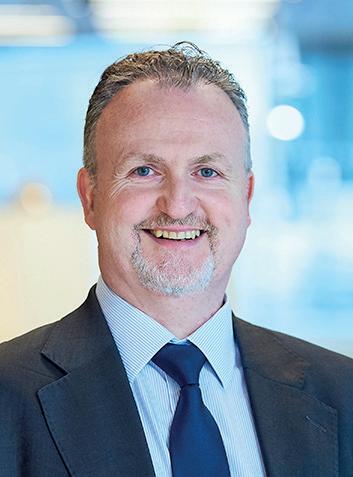
Other locations are gravitating towards accelerated settlement, too. Canada intends to bring in T+1 settlement to coincide with the US, while India has already started a phased transition to a T+1 cycle. It seems likely that the global market will follow the US, eventually even moving to a T+0 regime.
The incoming T+1 framework will put pressure on existing settlement processes, which are currently often neither joined up nor fully automated. In addition, the industry is grappling with pre-existing changes, including a post-Covid move towards greater digitalisation, pressures to reduce costs, and growing data and transaction volumes.
While the T+1 implementation deadline tends to dominate companies’ thinking, they should not overlook the opportunity T+1 brings to improve their operations. By scrutinising infrastructure and working practices, firms can weed out poor processes and outdated systems, improve decisionmaking, and identify higher quality
service providers – boosting the efficiency of their businesses.

Readiness for T+1 compliance varies across the industry. Some firms are well placed to cope, with sophisticated systems in use, while other, typically smaller, organisations continue to rely on manual processes and legacy systems. To meet the demands of T+1, and to lay the groundwork for T+0 readiness, firms should invest in reliable, proven IT systems. Advanced technologies, such as AI and machine learning, can also allow them to adapt quickly to future change, promoting a proactive approach that augments manual operational capability. With the deadline for compliance approaching, turning to a third-party technology specialist can be useful. A partner should offer established technology and high levels of support. Deep operational insight is essential, too, as this will enable it to help an institution review its current infrastructure and identify where efficiencies can best be achieved. With over four decades of experience, and an extensive history of delivering post-trade solutions and services to the financial sector, SmartStream is uniquely well positioned to help organisations meet the demands of accelerated trade settlement. A trusted partner to many of the world’s top financial institutions, SmartStream’s solutions and services range across the middle and back office.
SmartStream solutions assist firms to meet the demands of T+1 compliance across a wide range of post-trade activities – from reconciliations processing, through to cash and liquidity management, collateral management, and corporate actions. They can be accessed flexibly, too, whether using APIs and micro-services, through managed services and cloud environments, or via traditional on-premises installations.
The incoming T+1 cycle will force companies to carry out reconciliations processing in a compressed timeframe, leaving a far smaller window for discrepancies to be identified and fixed. Where existing reconciliations infrastructure relies on ageing legacy architecture and manual processes, firms may struggle. To cope with the rapid pace T+1 will impose, financial institutions require systems that allow a real-time, intraday processing approach. Any application chosen should be
asset-class agnostic, volume-insensitive, and capable of dealing with new and existing data formats.
SmartStream provides a fully controlled reconciliations architecture that delivers comprehensive exceptions management. Its rich exception handling capabilities offer in-depth insight into the state of transactions as they transition through the settlement lifecycle. Additionally, they permit exception categorisation, prioritisation, and allocation – enabling problems to be assessed and routed speedily to the appropriate team for resolution.
SmartStream reconciliations technology offers advanced reporting: real-time information means users can spot breaks quickly, refine decisionmaking and control risk more effectively. In addition, managers can carry out detailed trend analysis to pinpoint issues undermining processing efficiency. These features are built into the technology, so organisations do not need to create their own complex reporting systems. Our technology deploys AI and machine learning techniques, enabling it to onboard reconciliations more quickly, and handle highly complex data sets. It also facilitates self-service amongst business users, reducing reliance on busy IT departments. Importantly, SmartStream reconciliations technology can process tens of millions of transactions per day, from sources across all the disparate areas that touch T+1 settlement, creating a truly holistic view of processing activities.
THE ADVENT OF T+1 SETTLEMENT WILL FORCE FIRMS TO PAY FOR AND DELIVER SECURITIES FASTER, DRIVING THE DEMAND FOR INTRADAY LIQUIDITYVincent Kilcoyne, Executive VP Product Management at SmartStream
The advent of T+1 settlement will force firms to pay for and deliver securities faster, driving the demand for intraday liquidity. There is likely to be greater competition for funding sources, and increased need for short-term funding. There will be less time to spot and correct any mistakes – which could be expensive if a late funding request results.
SmartStream technology delivers real-time cash and liquidity management, consolidating existing siloed infrastructures, and capturing transactions from internal and external sources to create a single, global view of balances across all currencies and accounts. Firms can understand funding, borrowing, and lending requirements in real time, identify problems promptly and take corrective action quickly.
Financial institutions will need to make alterations to their collateral management practices – they
will have to automate all aspects of the collateral management process, including agreement, booking, substitutions and settlement notifications. They must automate connections to internal and external systems, as well as put in place an efficient fails management process. Easily and inexpensively upgradable technology is also desirable.
SmartStream provides an established, end-to-end, automated collateral management solution which is used by financial institutions across the globe. It connects to firms’ internal systems via application programming interfaces (APIs) that allow programmatic interactability. When users want to send and receive information, they can do so on a real-time notification basis. The APIs are backwardly compatible,
so changing any connectivity points when upgrading is unnecessary.
Another area where the impact of accelerated settlement will be felt is corporate actions. Once the T+1 regime comes into play, any corporate actions affecting instrument static data (and so impacting trade matching), will need to be processed within 24 hours of trade execution, to avoid failed settlements. Firms dependent on custodian data and spreadsheets are likely to find T+1 compliance especially testing.
SmartStream’s corporate actions solution delivers real-time processing for the complete lifecycle, handling complex events and providing visibility of all the corporate actions affecting the business.
The solution lowers the risk of errors or missed elections, improves efficiency, as well as reducing administrative burden and costs.
It is tempting for firms to prepare for T+1 implementation by falling back on the traditional route of hiring more people. Yet the key to solving T+1 compliance successfully is automation. Indeed, given the likelihood of an eventual transition to T+0 – where processing speeds will be far too great for human workers to cope with – it is surely the only realistic way forward.
SmartStream is a recognised leader in financial transaction management solutions that enables firms to improve operational control, reduce costs, build new revenue streams, mitigate risk and comply accurately with the regulators. By helping its customers through their transformative digital strategies, SmartStream provides a range of solutions for the back office, with AI and machine learning technologies embedded – which can be deployed in the cloud or as managed services.
As a result, more than 2,000 clients – including the majority of the world’s top 100 banks, rely on SmartStream to deliver greater efficiency to their operations.

Web: www.smartstream-stp.com
LinkedIn: linkedin.com/company/ smartstream-technologies
Email: info@smartstream-stp.com

Canada’s fintech landscape is in a transient phase.
External economic and geopolitical factors have led to a cautious approach from investors, leading to a drop in valuations and investments. Yet, amid these challenges, an emerging segment is capturing the attention of the industry: financial services tailored for newcomers.
Data from KPMG in Canada paints a clear picture of the investment slowdown in the Canadian fintech landscape. The first half of 2023 witnessed investment totalling US$353.7million across 57 deals – a stark contrast from the US$1.09billion across 87 deals in H2 2022 and US$834.1million from 109 deals in H1 2022.
The dip between the first and second quarter of 2023 is another cause for concern. The first quarter saw investments of US$297.3million across 30 deals, only for it to tumble to a mere US$56.5million across 27 deals in Q2, making it one of the most lacklustre quarters since Q3 2016. Such a decline brings back memories of the start of the Covid-19 pandemic when uncertainty and fears gripped the market.
Geoff Rush, partner and national industry leader for financial services at KPMG in Canada, elaborates on the reasons, pointing out concerns regarding the global economy’s health.
“Investors are still quite concerned about the state of the global economy, with fears of a recession, elevated inflation and interest rates continuing to put a significant strain on valuations, and that’s causing them to pause and reflect on their current investments and strategies,” says Rush.
“Geopolitical concerns and the failure of several banks in recent months are also playing into investors’ decisions. On the latter, the fact that that some loan portfolios and investment teams have been acquired by financial institutions recently illustrates that there are still opportunities in fintech.”
Venture capital investments reflect a similar trend. Firms pumped US$260.1million into Canadian fintechs in H1 2023 (across 47 deals). In comparison, the first half of 2022 enjoyed an investment of US$805.7 million from 95 deals. Furthermore, the lack of any initial public offerings continues, extending the dry spell from the previous year.

Despite the prevailing investment slump, there are glimpses of optimism in Canada’s fintech sector.
While investment will continue to be weak in the second half of this year, KPMG expects to see pockets
of activity in areas like blockchain, artificial intelligence, machine learning and generative AI.
Georges Pigeon, a partner in KPMG in Canada’s deal advisory practice, says the early and seed round activity suggests that investors are interested in funding young, innovative companies at reasonable valuations – a positive sign for the health and growth of Canada’s fintech ecosystem.
Over 2,600 fintechs operate in Canada, and this number is continuously increasing with new fintechs being founded within the country as well as fintechs from other nations launching products in Canada, she explains.
One of the fastest growing fintech segment in Canada is challenger banks, presently there are more than 90 challengers operating in Canada, Tim Hortons credit card being the most recent addition. For 2023, however, Fathom4sight suggests that the top fintech theme is financial services for newcomers to Canada.
“Right now could be good timing to launch a fintech startup as investors would be coming into the early financing rounds. At reasonable valuations, many investors have time to see their investment through, so it’s a good opportunity for new fintechs to emerge.”
Surinderjit Kaur Bhatti (Jeet), CEO of Fathom4sight, a knowledge-as-a-service (KaaS) platform focused on fintech and financial innovation space, further highlights this optimism and illuminates the growth trajectory of specific fintech segments.
“This year, so far each of the big banks in Canada has announced a partnership with an immigrant-focused platform to offer accredited financial products information and financial guidance to newcomers in the country,” says Jeet.
“Recently, Scotiabank announced partnership with a fintech called Nova Credit, that will enable Scotiabank to offer its prospective customers the ability to share their foreign credit reports when applying for Scotiabank products.
“Lack of credit history in Canada is one of the biggest issues for immigrants, and in recent months we have seen multiple fintechs launching credit score builder offerings, including established fintechs like Neo Financial that just launched a secured credit card that will enable people with low credit score in Canada to enjoy same perks of a normal credit card.
“Borrowell also launched Rent Advantage product that helps build credit history by reporting rental payments every month to Equifax. Increasing immigrant population in Canada is an amazing opportunity for both banks and fintechs in Canada.”
“INCREASING IMMIGRANT POPULATION IN CANADA IS AN AMAZING OPPORTUNITY FOR BOTH BANKS AND FINTECHS IN CANADA”

Banks are struggling to keep up with the rate of change, and the cost of this is becoming clearer. Almost two thirds of banks (63 per cent) believe they have missed out on new customers because their digital transformation efforts have been too slow, while one in five say they have lost customers due to poor user experience, according to a recent 10x Banking study.
Those stats are more alarming given the scale of resources banks have already thrown at the problem. Transformation typically accounts for more than a fifth of IT spend at banks where transformation is embedded into their IT budgets, according to the European Central Bank.
At the heart of this is a detachment between banks and their customers, explains Antony Jenkins, 10x CEO, founder and former Barclays CEO. He says: “Over my career I have learnt banking is about customers, but the reality is most of the banking industry has overlooked what matters, taking a product-focused approach rather than focusing on the customer.”
Part of the problem is the divergence between how banking leaders think they are transforming versus the reality managers are experiencing on the ground. This perception gap persists because leaders and managers have differing views on what to prioritise. Leaders say onboarding new customers should be the focus, while managers list data and analytics as their top priority.
Despite the lack of alignment, both priorities can be achieved through successful transformation – something that has proved difficult for banks to reach.
According to EY, 38 per cent of leaders say transformations underperform against their key performance indicators, while two-thirds say they have experienced at least one underperforming transformation in the past five years.
With differing internal priorities, it’s easy to see why transformation is slow.
Only 35 per cent of leaders and 28 per cent of managers believe their banks can respond to market events fast enough, for instance when interest rates change and offers need refreshing. 10x Banking’s research found it takes 3.5 months to update a product and 4.3 months to release a new product in a new market. This highlights another perception gap – bank leaders believe it takes far longer to innovate than it would if they were using the right technology to support their transformation efforts. Releasing new products or updating existing ones doesn’t need to take so long – all of this can be done in days or even hours using a cloud-native core banking platform.
“The perception that digital transformation takes months is an illusion based on their existing limited parameters,” said Jenkins. “By moving a bank’s core technology to a modern, cloud-native system, the parameters cease to exist.”

Accelerating transformation isn’t just essential for attracting and keeping customers, it’s increasingly pivotal for staff satisfaction – and banks can’t afford to drag their feet. Ninety-four per cent of managers said they would leave to work for a competitor with better technology, while another 92 per cent said they would also leave for a bank that has more ambitious transformation goals.
“As our findings reveal, institutions resistant to digital transformation have committed a significant oversight, as a lack of perceived innovation has rendered them vulnerable to talent shortages,” said Jenkins. “It seems clear that those on the ground recognise the opportunities to be gained by adopting digital processes and can quickly acknowledge when progress is minimal. If banks don’t align with these expectations, employees in their masses are willing to seek roles at banks that do.”
While a third of banks believe they have already achieved their transformation goals, this bold claim is likely because of how they define transformation, explains Jenkins.
“Banks often mistake transformation for innovation,” he said. “Innovation is a linear series of marginal improvements, whereas true transformation is a non-linear step-change in improvements, beginning with a material improvement in customer experience. Many banks
might convince themselves that releasing an app or going digital means they have been on a journey of transformation, but the reality is that very few banks are undergoing true change at their core.”
To innovate and transform at the same time, banks need to overhaul the systems at their core. Most respondents (75 per cent) believe that outsourced cloud-based banking systems will speed up transformation, making it faster to release and update products, improve the customer experience, and streamline operations. To achieve true transformation, banks need to radically change how their business works, rather than simply shifting existing workflows into the cloud.
“Anything can be done with enough time and money,” said Jenkins. “But the risk is that you do what a lot of banks have done with these types of projects over the years, which is spend hundreds of millions, sometimes billions of dollars, and have nothing to show for it at the end of a five or six-year period. If you can work with somebody like us who has done the heavy lifting, banks can do it much more cheaply, much more quickly, and in a much lower-risk fashion.”
About 10x 10x’s mission is to make banking 10x better for customers, banks, and society.
Founded in 2016, the company’s next-generation core banking platform, SuperCore®, enables banks to launch products and customer experiences faster and more cost-effectively, powered by real-time data.
The platform supports retail, SME, and corporate banking across current and savings accounts, credit cards, lending, and mortgages. Available as a SaaS platform hosted in the public cloud, SuperCore is fully managed by 10x to ensure local and regional compliance, robust security, always-on performance, and operational resilience.
Today, 10x powers some of the world’s leading banks, supporting greenfield projects, core migrations, and banking as a service partnerships.
Web: 10xbanking.com
LinkedIn: linkedin.com/ company/10x-banking
Twitter: @10XBanking
Banking’s study shows banks lagging in digital pace lose customers; a swift cloud transition is the remedy
To innovate and transform at the same time, banks need to overhaul the systems at their core
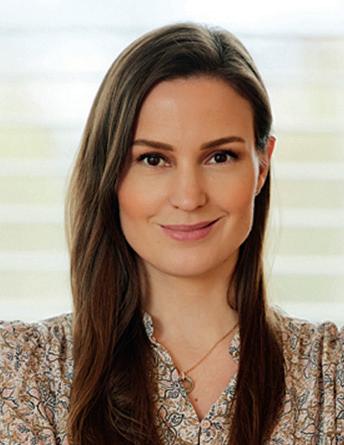
Brite Payments leverages open banking technology to process account-to-account (A2A) payments in real-time between consumers and online merchants. When consumers use Brite, no signup or credit card details are needed as they can authenticate themselves with top-of-mind details using their bank’s usual identification method.
In many ways, payments are broken, but our mission is to provide the fix. Brite is focused on delivering a superior merchant experience, while developing a recognised, trusted consumer brand. Ensuring a superior instant payout experience is also core to our vision – as this is an increasingly important part of the overall payments experience for merchants and businesses across a range of verticals.
Brite Payments has evolved considerably since the company was founded in 2019. In 2020, we processed the first live transactions on our platform. Since then, we’ve expanded beyond our home base in Sweden and now operate across 25 European markets. Already this year, we’ve expanded our payouts offering into the Croatian, Romanian and Hungarian markets, brought instant payments to Belgium, and most recently launched both instant payments and payouts in Denmark. Alongside this exciting expansion, we continue to prioritise product innovation. One of the best examples is our ‘Single Sign’ solution, which is essentially the open banking equivalent of one-click buying. It’s a powerful tool that enables consumers to complete payments up to 40 per cent faster than standard A2A solutions.
We’re also a much larger business now than we were even a year ago. Our headcount roughly doubled in 2022 and our team now spans 25 different nationalities. In 2022, Brite also doubled its transaction volume and was ranked as one of Sweden’s fastest growing fintechs. This incredible growth spurt allowed us to move to a new office space in Stockholm, which we’re delighted to call home.
A GREAT PLACE TO WORK?
I’m personally very proud of the culture we’ve managed to build at Brite. Across the business we have highly capable and ambitious professionals who genuinely care about one another and bring with them many years of shared experience within the payments space. We’ve also worked hard to cultivate an atmosphere of support and encouragement, which makes a huge difference. As a relatively small but growing company, there’s also plenty of scope for professional development as our teams expand, and individuals can take on exciting projects or new responsibilities.
QAS A SECOND-GENERATION FINTECH, WHAT LESSONS HAVE YOU LEARNED FROM THE SUCCESSES AND FAILURES OF THE FIRST WAVE OF FINTECH COMPANIES?
Fintech is still a thriving sector, but the market isn’t growing as rapidly as it once was. However, second-generation businesses can learn from the lessons of those who have come before, and act more efficiently and strategically as a result.
I believe it’s important to shift away from seeing growth as the only relevant figure when determining what ‘success’ looks like, and instead, place a firmer emphasis on building great products that people love and that truly add value.
The first wave of fintech happened at a time when out-of-the-box technology was less commonplace. Nowadays, many basic technological components are widely available, which means second-generation fintechs can scale their businesses more quickly. However, this new reality also allows competitors to ‘assemble’ similar solutions more easily. That’s why second-generation fintechs – Brite included – have to really focus on building differentiated solutions that address customers’ real pain points.
The advantages that instant payments and instant payouts offer across markets and different industries are numerous,
and Brite is at the forefront of building the solutions that will help merchants and businesses benefit. We will retain our focus on merchant and consumer convenience as we continue to expand into new markets and innovate with new products and capabilities. We also will continue hiring locally to develop deeper connections with our customers in those markets Ultimately, we want to bring the benefits of open banking-powered instant payments to more businesses and consumers. While our current focus is Europe, where there is still much to be done to overcome the fragmented real-time payments landscape, we are also closely following the rollout of open banking around the world.

“IN MANY WAYS, PAYMENTS ARE BROKEN, BUT OUR MISSION IS TO PROVIDE THE FIX. BRITE IS FOCUSED ON DELIVERING A SUPERIOR MERCHANT EXPERIENCE, WHILE DEVELOPING A RECOGNISED, TRUSTED CONSUMER BRAND”
The metaverse is still proving to be somewhat of an enigma within the industry, though its uses within financial services seem to be essential as time goes on. Despite the buzz when it was first unveiled, there is still an air of mystery surrounding it, which Arun Krishnakumar and Theodora Lau attempt to unfold within this book.
Pre-empting the development of the metaverse and its eventual importance to the industry, they have created a handbook of sorts to guide readers through the world that is Web3, laying out their vision of the future as well as delivering a solid foundation for the situation at hand.
The Ready Player One analogy is often thrown around when speaking of the metaverse. When Facebook first unveiled its new name and new strategy back in October of 2021, the whole world took notice and got excited about their chance to delve into a virtual reality world. Sci-fi and fantasy rolled into one. However, though the promised digital wonderland *is* a thing, the metaverse promises to be more of an economy-lead beast, borrowing features from in-game transactions to make a new form of digital real estate.
For anyone still scratching their heads, and I must raise my own hand here too, then fear not, because this book is ready to guide you through the world of the metaverse and Web3 and have you emerging as an expert.
Despite the world of the metaverse evolving so quickly, as we’re all familiar with in the fintech world, The Metaverse Economy: How Finance Professionals Can Make Sense of Web3 provides a wellresearched and easy-to-digest overview of the situation, taking a particular view of the types of economic models that companies can use to scale their businesses in Web3 – a must for the future if the industry experts are to be believed.
The book starts where every book should, at the beginning. The first chapter is dedicated to delving into the background of Web3, and its humble beginnings as Web2 business models (and if you’re anything like me then it’s a great introduction to the concept of Web2 in
By Polly Jean Harrison , Features Editor at The Fintech Timesgeneral – as who knew?!) The chapter details the birth of Web2 and its evolution to the foundations of the Web3 models we know today.
The end of the chapter even includes a handy chart clearly showing the high-level differences between the different evolutions of the web – which for anyone else who is still not too sure about this whole ‘web’ business but is too afraid to ask… is worth the price of the book itself (along with the glossary of terms at the back!)
Chapter four looks at the concept of decentralised finance (or DeFi to those savvy), explaining the attractiveness of financial applications being run via smart contracts on the blockchain without relying on centralised intermediaries like banks, brokerages, or exchanges.
The real excitement begins in chapter six when we start diving into the main event – what actually is a metaverse?

The authors explain how the term isn’t a new thing and appeared in a 1992 book by Neal Stephenson as ‘a place where digital replaced the physical’. The authors even take the time to explain the popular online game Roblox – which for anyone who’s out of the loop, aka if they aren’t a teenager or don’t have them in the house, will be very thankful for.
Interspersed with interviews and comments from prominent members of the fintech world, as well as the occasional aside to define a relevant fintech idea this book successfully breaks down the chunky topic of the metaverse and Web3. The authors provide a solid foundation to new and early adopters alike, offering an easy-to-digest grounding to the fast-paced world. There’s a wonderful lack of jargon or other complex language, just a black-andwhite account of one of the economy’s more difficult-to-swallow topics.
THE METAVERSE ECONOMY: HOW FINANCE PROFESSIONALS CAN MAKE SENSE OF WEB3 by Arunkumar Krishnakumar and Theodora Lau

Available: Kindle, Hardback and Paperback
The following chapters tell a detailed and captivating story of the ecosystem at hand, laying it out in a way that you actually want to read. Chapter three sees the introduction of NFTs and the ownership economy, offering a brief but fascinating history of the tokens and their impact on the future of the community.
As Theodora Lau writes: “At the end of the day, technology is a means towards the end. For any innovation to get to mass adoption, it must serve a true purpose, regardless of how cool the technology may seem.” And while there’s still a long way to go for the adoption of the metaverse, Krishnakumar and Lau have certainly made the technology seem very cool to the discerning reader. Not only that, but they’ve made the metaverse accessible to more people than ever, and allow their readers to stay ahead of the curve and realise the opportunities presented by Web3 in a genuinely interesting and pleasurable read.
This book is essential to anyone looking to dip their toes into the world of the metaverse. If you want to open your eyes to the world of future possibilities, then Krishnakumar and Lau’s well thought out and insightful tome is certainly the place to start.
Beyond Good: How Technology is Leading a Purpose-driven Business Revolution by Theodora Lau & Bradley Leimer
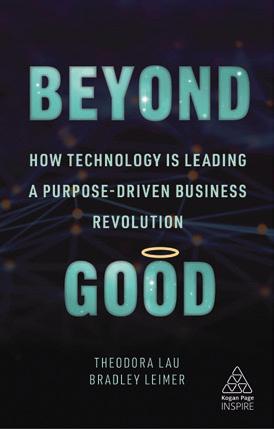
Available: Kindle, Hardback and Paperback
Re-Architecting Trust: The Curse of History and the Crypto Cure for Money, Markets, and Platforms by Omid Malekan Available: Kindle, Hardback and Paperback
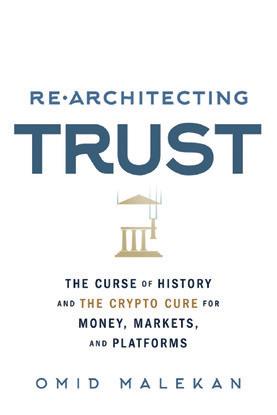
The Great Transition: The Personalization of Finance is Here by Emmanuel Daniel Available: Kindle, Hardback and Paperback
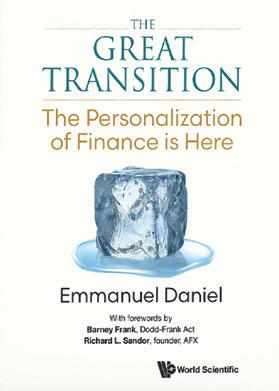
Bankers
Like Us: Dispatches from an Industry in Transition by Leda Glyptis Available: Kindle and Hardback

Redecentralisation: Building the Digital Financial Ecosystem by Ruth Wandhöfer and Hazem Danny Nakib
Available: Kindle and Hardback
